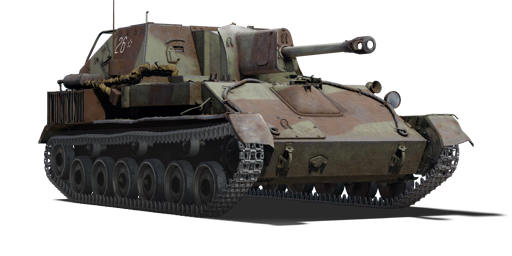


The SU-76M (5th Gv.Kav.Corps) is a premium gift Soviet tank destroyer. It was introduced during Update 1.49 "Weapons of Victory". The vehicle was made available during the WW2 Chronicles and "Tanker's Day Specials!" events in 2015, and again in the Victory Day Tournament and "Happy tanker's day!" events in 2017, it later appeared in the Warbonds shop as part of the trophy chest in April 2018.
The finest example of a so-called "glass cannon", SU-76M is a small, nimble SPG, but its strongest trait is its gun – the 76.2 mm (3-inch) ZiS-3 possesses a good rate of fire, is able to frontally penetrate and destroy any opposition at the given BR spread, and its shrapnel round is extremely effective against self-propelled anti-aircraft guns and other lightly armoured vehicles, making the HE shell somewhat redundant.
| Ammunition | Type | Armor penetration (mm) at a distance: | |||||
|---|---|---|---|---|---|---|---|
| 10 m | 100 m | 500 m | 1000 m | 1500 m | 2000 m | ||
| APHEBC | 87 | 85 | 77 | 69 | 62 | 55 | |
| HE | 13 | 12 | 11 | 10 | 10 | 10 | |
| Shrapnel | 35 | 34 | 30 | 26 | 22 | 19 | |
| APBC | 99 | 96 | 87 | 76 | 66 | 58 | |
| APCR | 125 | 117 | 87 | 60 | 41 | 28 | |
| HEAT | 80 | 80 | 80 | 80 | 80 | 80 | |
| APHEBC | 96 | 94 | 84 | 74 | 64 | 56 | |
| Smoke | 3 | 3 | 3 | 3 | 3 | 3 | |







 2 x (40 / 70 / 115) %
2 x (40 / 70 / 115) % 
 2 x 118 %
2 x 118 % 

Mobility | |
|---|---|
Protection |
|---|
Firepower | ||
|---|---|---|